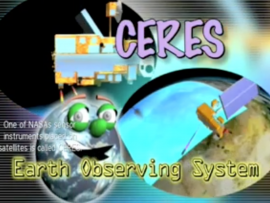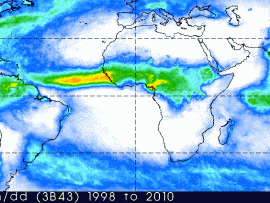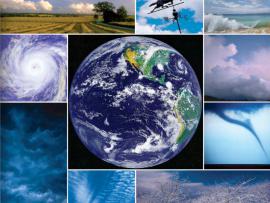Search
Primary tabs
Search
Your search for "atmosphere" gave back 67 results.
Primary Topic:
Subtopics:
Type:
Keywords:
Summary:
Learn how scientists use a satellite called CERES to study the clouds and monitor Earth's climate changes.
Primary Topic:
Subtopics:
Type:
Keywords:
Summary:
Explore how water moves across land and returns to the ocean in the final installment of the water cycle series. The visualizations illustrate the movement of water on land—from storage of precipitation in soil layers, to its transport via rivers.
Primary Topic:
Subtopics:
Type:
Standards:
Keywords:
Summary:
Contrary to popular belief, raindrops are not tear shaped and are actually shaped like the top of a hamburger bun, round on the top and flat on the bottom. This new video from GPM explains why.
Primary Topic:
Subtopics:
Type:
Keywords:
Summary:
Find out how scientists use the distinct sounds made underwater by different size raindrops to measure rainfall.
Primary Topic:
Subtopics:
Type:
Keywords:
Summary:
Learn how clouds are formed and watch an experiment to make a cloud using liquid nitrogen.
Primary Topic:
Type:
Summary:
Home page for the Weather and Climate topic.
Primary Topic:
Subtopics:
Type:
Summary:
A collection of resources exploring how NASA satellites like GPM can help monitor and predict Earth's climate.
Primary Topic:
Subtopics:
Type:
Keywords:
Summary:
This short video, derived from the Science on a Sphere film "Water Falls", explores how Earth's freshwater resources are allocated and used.
Primary Topic:
Subtopics:
Type:
Keywords:
Summary:
A basic introduction to meteorology, including inquiry activities and instructions to build and use weather instruments for a weather station, collect data, and predict weather systems.











